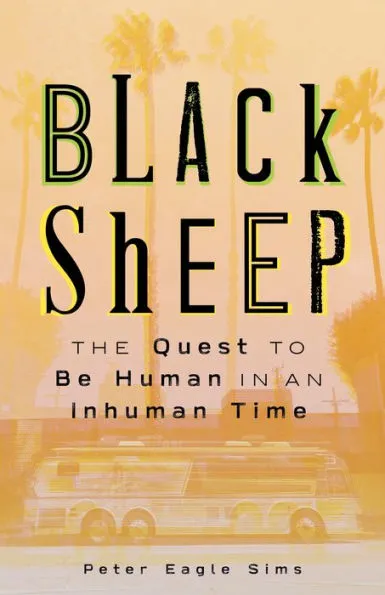Originally published on Reuters.com.
It has been damn near impossible to find consistently good and objective insight and analysis from business thought leaders. But Robert I. Sutton, a professor of Management Science and Engineering at Stanford and the Stanford Institute of Design (where we have overlapped), is an exception.
His new book, out now, is his best to date. Good Boss, Bad Boss is food for thought for managers and leaders in organizations large and small. It is packed with insight, lists of “how to” suggestions, and questions for bosses to ask themselves.
Sutton weaves many of these nuggets together with interesting stories in Good Boss, Bad Boss — while building on his last book, The No Asshole Rule, a New York Times best seller.
Sutton draws upon an impressively broad collection of research, including fascinating sociology research from Rob Cross that shows top performing employees are far more likely to have high energy than high IQs. He also gives some space to Frank Flynn’s research about what kind of boss is most effective — competitive, aggressive, passive, or submissive. “Moderately assertive” bosses win. Those bosses are able to strike a balance between managing too much and too little, something Sutton calls “Lasorda’s Law,” after the former Los Angeles Dodgers manager Tommy Lasorda’s style.
Most of the book is organized around insights like these, including INSEAD’s Morton Hansen whose research shows the problems with “solo star” organizational cultures and Amy Edmondson’s research about the importance of psychological safety in order to increase decision-making and creative confidence.
Sutton also quotes from Karl Weick, the legendary psychology professor at University of Michigan’s business school, who taught Sutton: “fight as if you are right, and listen as if you are wrong.”
Sutton laces the observations together with illustrative anecdotes about good bosses like 3M’s William Coyne, Pixar’s Ed Catmull, IDEO’s David Kelley, and Lenny Mendonca of McKinsey & Company – and bad bosses, such as the temperamental Joe Cassano of AIG, whose division lost an estimated $45 billion.
He also shares the best organizational insights and observations he has accumulated over the years such as at Avis, General Motors (a company and culture Sutton has followed closely and astutely), and The Onion. General Motors managers, for example, were distanced from the needs of their customers for years because they got free GM cars, without haggling at dealerships. Meanwhile, writers at The Onion throw out 600 headlines ideas for every 18 that get published — a testament to the importance of creating failure-tolerant cultures.
At times, though, so many insights make the book feel a bit like a cookbook and wind up getting lost in the shuffle. Sutton’s a good writer, although be prepared to dog-ear and underline your copy to revisit the themes that resonate the most.
The best chapter, though, does just the opposite. Chapter 8: “Squelch Your Inner Bosshole” presents Sutton’s unique contribution to the mountains of leadership and management literature – while illustrating the corrosive long-term effects that toxic and bullying bosses (i.e. assholes) have on organizations, Sutton presents a compelling case for the need for good bosses. In doing so, he coins a new term “bosshole.”
“Bossholes make people sick,” he writes before citing a study of 6,000 British civil servants over 20 years that found that people experienced more heart attacks, angina, and deaths from heart disease when bosses criticized them unfairly, didn’t offer praise, and didn’t listen to their problems.
A Swedish study of over 3,000 workers produced a similar finding. “I would call those lousy Swedish bosses incompetent assholes, as they were bad at getting things done and treated people like dirt,” Sutton writes. Sutton’s blend of rigorous empiricism, humor, passion, and catchy phraseology is both memorable and powerful.
So is your boss a “bosshole”? Sutton provides a 20-item survey here to find out.
Inovasi Baru: Situs Game Slot Online Gacor Tanpa Potongan Terbaru
Salah satu daya tarik utama dari situs game slot online gacor tanpa potongan adalah kesempatan untuk mendapatkan kemenangan yang lebih besar. Tanpa adanya potongan dari kemenangan, pemain dapat memperoleh hasil yang lebih signifikan dari taruhan mereka. Ini memberi insentif tambahan bagi para pemain untuk terus bermain dan meningkatkan peluang mereka untuk meraih jackpot besar. Dengan adanya sistem pembayaran yang adil dan transparan, para pemain dapat yakin bahwa mereka memiliki kesempatan yang sama untuk meraih kemenangan besar.
Penawaran Bonus yang Menggiurkan
Selain dari kesempatan untuk memenangkan hadiah besar, situs game slot online gacor tanpa potongan juga menawarkan berbagai bonus dan promosi yang menggiurkan. Mulai dari bonus selamat datang hingga program loyalitas, para pemain dapat menikmati berbagai keuntungan tambahan yang meningkatkan nilai permainan mereka. Bonus-bonus ini tidak hanya meningkatkan peluang untuk menang, tetapi juga menambah keseruan dan kegembiraan dalam bermain game slot online. Dengan berbagai penawaran yang tersedia, pemain memiliki lebih banyak insentif untuk tetap setia pada situs tersebut.
Panglima Ukraina Membuktikan Keunggulan Rusia di Garis Depan
Panglima militer Ukraina baru-baru ini mengungkapkan bahwa pasukan Rusia memiliki keunggulan yang signifikan di garis depan pertempuran, dengan perbandingan kekuatan mencapai 6 banding 1. Pernyataan tersebut menyoroti tantangan besar yang dihadapi Ukraina dalam menghadapi konflik yang berlarut-larut dengan tetangganya yang jauh lebih besar.
Menurut Panglima Ukraina, keunggulan tersebut mencakup jumlah personel, persenjataan, dan dukungan logistik yang jauh melampaui kapasitas militer Ukraina. Meskipun Ukraina telah melakukan berbagai upaya untuk memperkuat pertahanannya, termasuk bantuan dari negara-negara Barat, perbedaan dalam hal kekuatan masih sangat mencolok.


